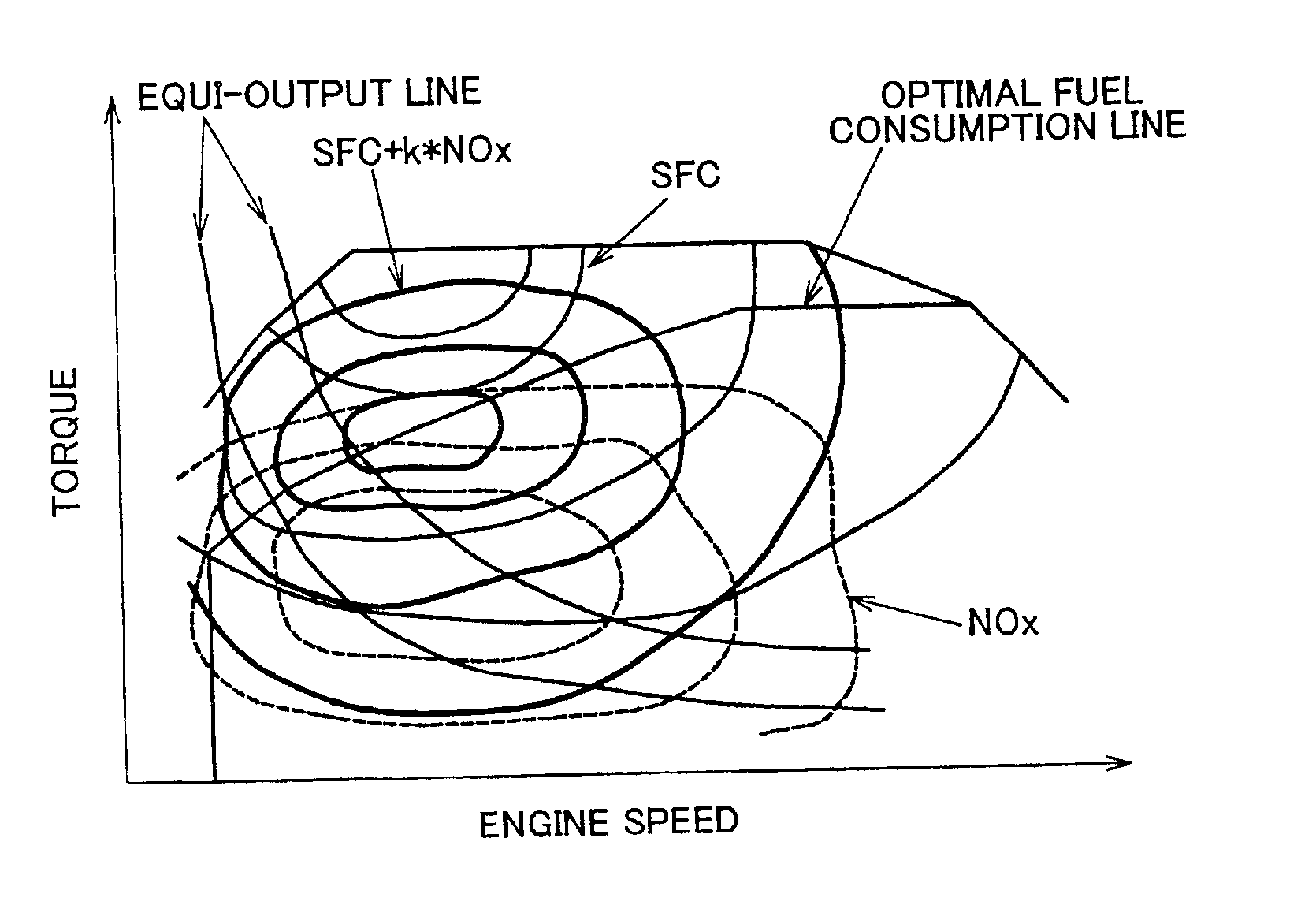Control apparatus and method for vehicle having internal combustion engine and continuously variable transmission, and control apparatus and method for internal combustion engine
- Summary
- Abstract
- Description
- Claims
- Application Information
AI Technical Summary
Benefits of technology
Problems solved by technology
Method used
Image
Examples
Embodiment Construction
Hereafter, some exemplary embodiments of the invention will be described in detail with reference to the drawings. An internal combustion engine to be controlled by a control apparatus for a vehicle or an engine according to the exemplary embodiments is a power generating device, such as a diesel engine and a gasoline engine, for generating power by burning a fuel. For example, the internal combustion engine is installed on a motor vehicle, such as an automobile, and is primarily used as a power source for running the vehicle. FIG. 2 schematically illustrates an example of a direct-injection type diesel engine 1 (hereafter simply called “engine”) used as a vehicle power source. The engine 1 is of the direct-injection type in which the fuel is injected directly into cylinders, and is provided with an electronically controlled fuel injection system 2 of a common rail type, which permits fuel injection at a high pressure. The electronically controlled fuel injection system 2 of this em...
PUM
 Login to View More
Login to View More Abstract
Description
Claims
Application Information
 Login to View More
Login to View More - R&D
- Intellectual Property
- Life Sciences
- Materials
- Tech Scout
- Unparalleled Data Quality
- Higher Quality Content
- 60% Fewer Hallucinations
Browse by: Latest US Patents, China's latest patents, Technical Efficacy Thesaurus, Application Domain, Technology Topic, Popular Technical Reports.
© 2025 PatSnap. All rights reserved.Legal|Privacy policy|Modern Slavery Act Transparency Statement|Sitemap|About US| Contact US: help@patsnap.com



